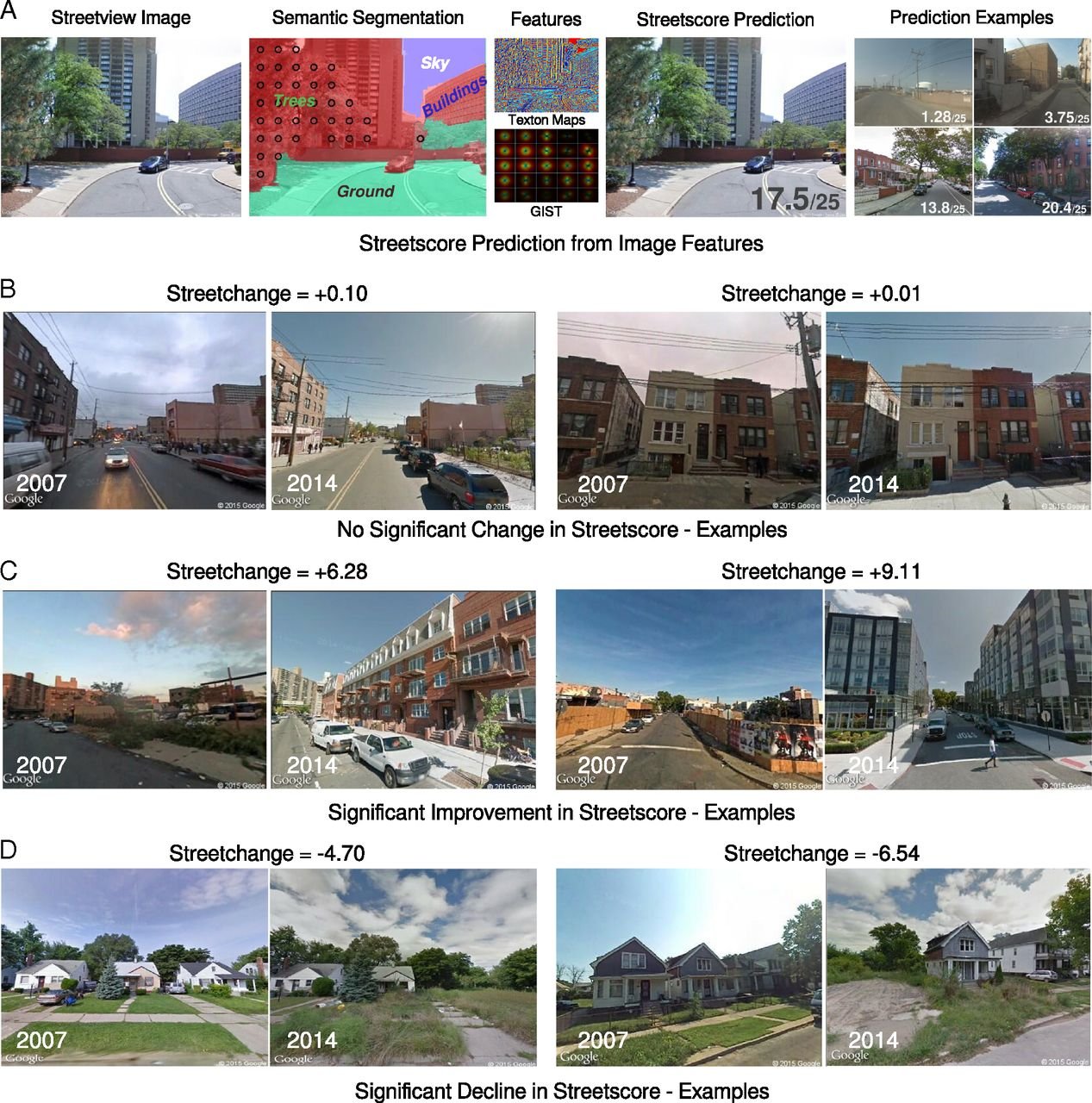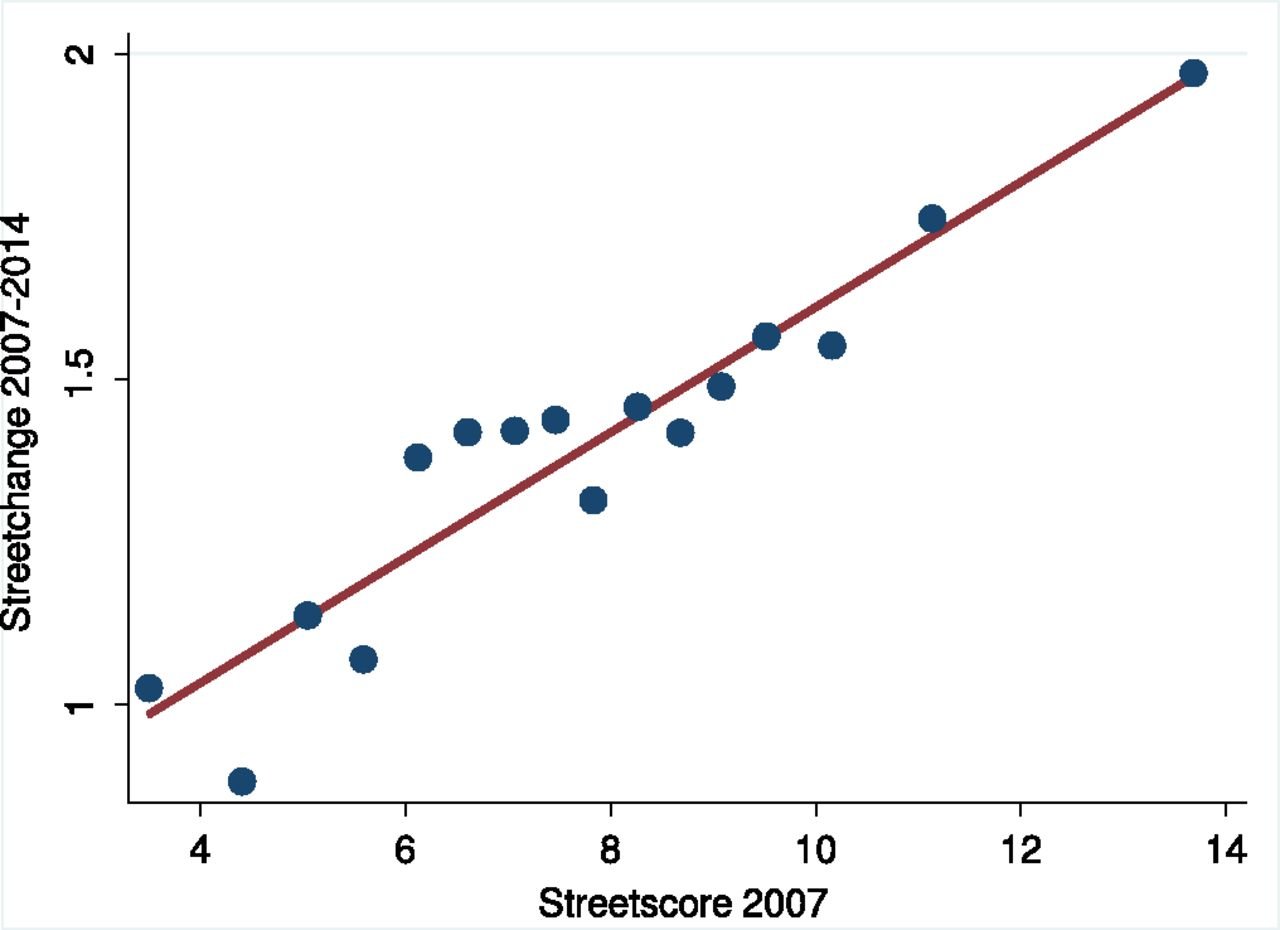文章信息:Nikhil Naik, Scott Duke Kominers, Ramesh Raskar, Edward L. Glaeser, & César A. Hidalgo. (2017). Computer vision uncovers predictors of physical urban change. Proceedings of the National Academy of Sciences: 114(29), 7571–7576. https://doi.org/10.1073/pnas.1619003114
整理人:杨文,2023级硕士生
整理时间:2024年8月13日
Abstract:Cities with economic and demographic data and find three factors that predict neighborhood improvement. First, neighborhoods that are densely populated by college-educated adults are more likely to experience physical improvements—an observation that is compatible with the economic literature linking human capital and local success. Second, neighborhoods with better initial appearances experience, on average, larger positive improvements—an observation that is consistent with “tipping” theories of urban change. Third, neighborhood improvement correlates positively with physical proximity to the central business district and to other physically attractive neighborhoods—an observation that is consistent with the “invasion” theories of urban sociology. Together, our results provide support for three classical theories of urban change and illustrate the value of using computer vision methods and street-level imagery to understand the physical dynamics of cities.
摘要:在拥有经济和人口数据的城市发现了三个预测社区改善的因素。首先,受过大学教育的成年人人口稠密的社区更有可能经历身体上的改善——这一观察结果与将人力资本与当地成功联系起来的经济文献相一致。其次,平均而言,初始外观更好的社区会经历更大的积极改善——这一观察结果与城市变化的“倾斜”理论是一致的。第三,社区改善与靠近中央商务区和其他有吸引力的社区呈正相关——这一观察结果与城市社会学的“入侵”理论是一致的。我们的研究结果共同为城市变化的三个经典理论提供了支持,并说明了使用计算机视觉方法和街道级图像来理解城市物理动态的价值。

图 计算街道变化
(A)我们使用基于两个图像特征的回归模型计算街道评分,这是衡量街景感知安全性的指标:GIST和texton地图。我们根据四个对象类别(地面、建筑物、树木和天空)的像素计算这些特征,这些特征是使用语义分割推断出来的。(B-D)我们将街区的街道变化计算为2007年和2014年拍摄的一对图像的街道分数之差。(B) 街道变化指标不受季节和天气变化的影响。(C) 大型积极的街道变化通常与大型建筑有关。(D) 大规模的负面街道变化与城市衰败有关。插图由谷歌股份有限公司提供。

图 邻里倾斜的证据
我们测试了邻里变化的倾斜模型。我们根据街道评分的初始值将数据分为16个区间,并将每个区间的平均街道变化与平均初始街道评分进行比较。

图 社区物理升级的相关因素
积极的城市变化发生在地理和物理上有吸引力的地区,这些地区人口密集、受过高等教育,如纽约布鲁克林所示。
原文链接:https://www.nature.com/articles/s41562-016-0012